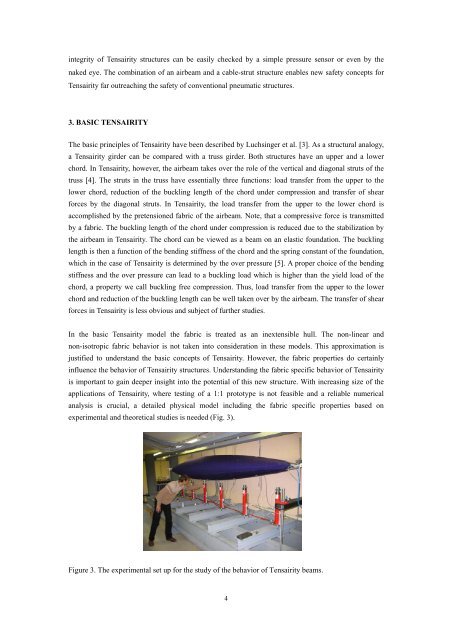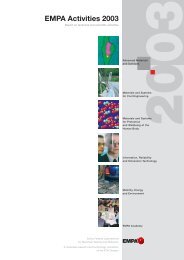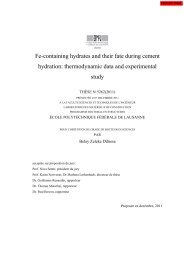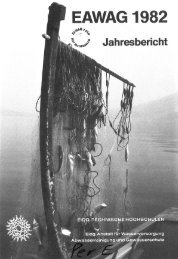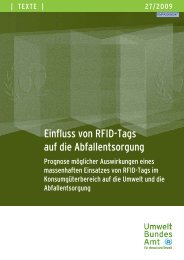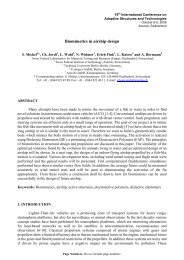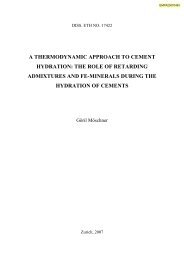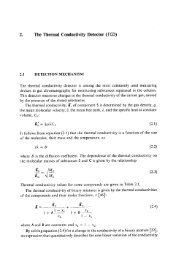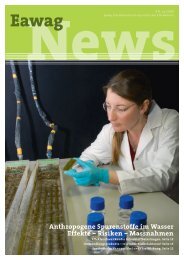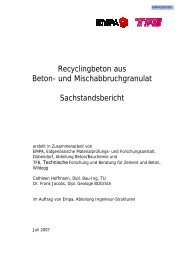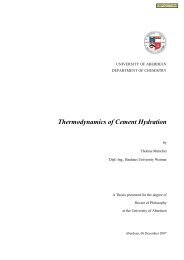THE ROLE OF FABRICS IN TENSAIRITY - Eawag-Empa Library
THE ROLE OF FABRICS IN TENSAIRITY - Eawag-Empa Library
THE ROLE OF FABRICS IN TENSAIRITY - Eawag-Empa Library
Create successful ePaper yourself
Turn your PDF publications into a flip-book with our unique Google optimized e-Paper software.
integrity of Tensairity structures can be easily checked by a simple pressure sensor or even by the<br />
naked eye. The combination of an airbeam and a cable-strut structure enables new safety concepts for<br />
Tensairity far outreaching the safety of conventional pneumatic structures.<br />
3. BASIC <strong>TENSAIRITY</strong><br />
The basic principles of Tensairity have been described by Luchsinger et al. [3]. As a structural analogy,<br />
a Tensairity girder can be compared with a truss girder. Both structures have an upper and a lower<br />
chord. In Tensairity, however, the airbeam takes over the role of the vertical and diagonal struts of the<br />
truss [4]. The struts in the truss have essentially three functions: load transfer from the upper to the<br />
lower chord, reduction of the buckling length of the chord under compression and transfer of shear<br />
forces by the diagonal struts. In Tensairity, the load transfer from the upper to the lower chord is<br />
accomplished by the pretensioned fabric of the airbeam. Note, that a compressive force is transmitted<br />
by a fabric. The buckling length of the chord under compression is reduced due to the stabilization by<br />
the airbeam in Tensairity. The chord can be viewed as a beam on an elastic foundation. The buckling<br />
length is then a function of the bending stiffness of the chord and the spring constant of the foundation,<br />
which in the case of Tensairity is determined by the over pressure [5]. A proper choice of the bending<br />
stiffness and the over pressure can lead to a buckling load which is higher than the yield load of the<br />
chord, a property we call buckling free compression. Thus, load transfer from the upper to the lower<br />
chord and reduction of the buckling length can be well taken over by the airbeam. The transfer of shear<br />
forces in Tensairity is less obvious and subject of further studies.<br />
In the basic Tensairity model the fabric is treated as an inextensible hull. The non-linear and<br />
non-isotropic fabric behavior is not taken into consideration in these models. This approximation is<br />
justified to understand the basic concepts of Tensairity. However, the fabric properties do certainly<br />
influence the behavior of Tensairity structures. Understanding the fabric specific behavior of Tensairity<br />
is important to gain deeper insight into the potential of this new structure. With increasing size of the<br />
applications of Tensairity, where testing of a 1:1 prototype is not feasible and a reliable numerical<br />
analysis is crucial, a detailed physical model including the fabric specific properties based on<br />
experimental and theoretical studies is needed (Fig. 3).<br />
Figure 3. The experimental set up for the study of the behavior of Tensairity beams.<br />
4


